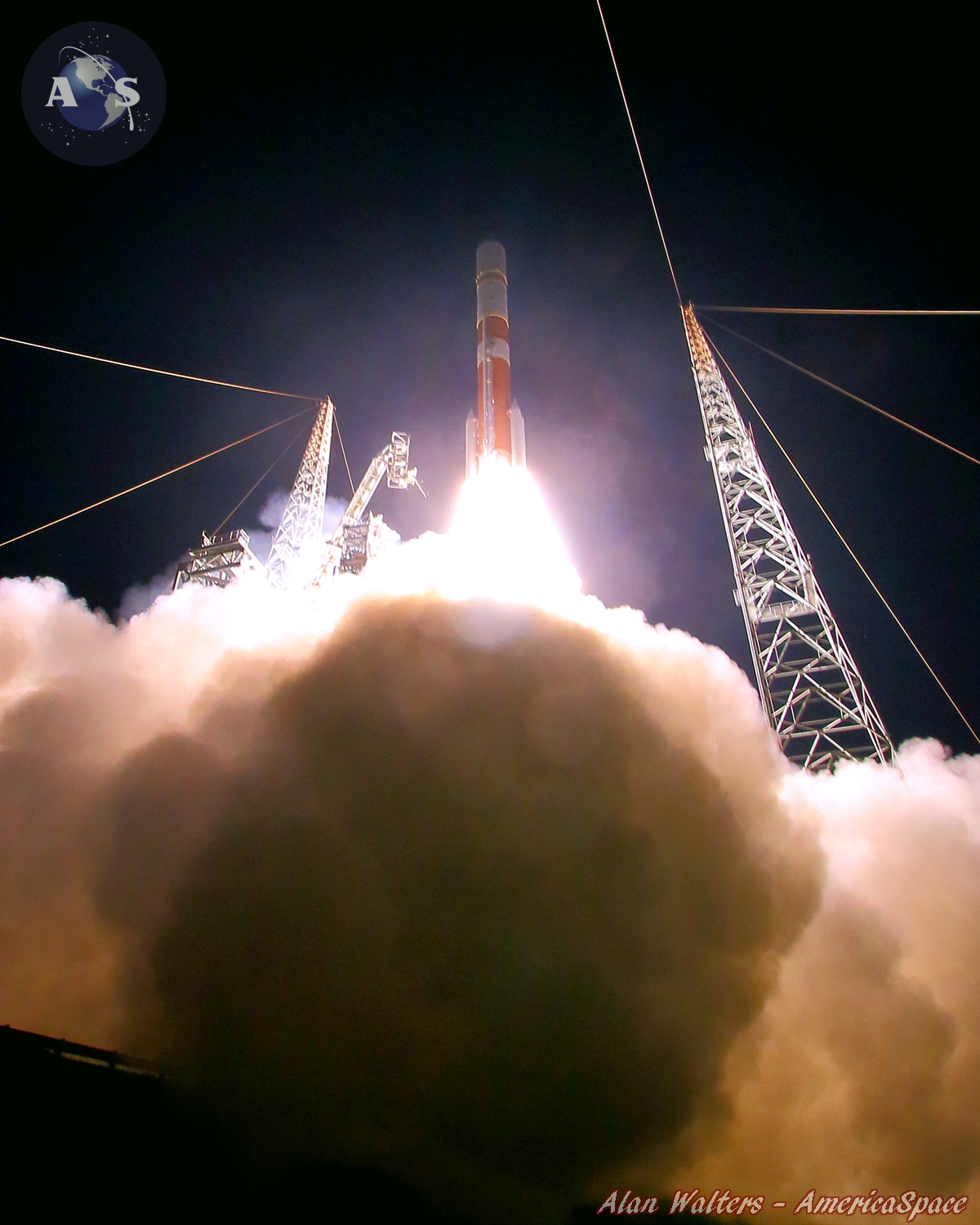[youtube_video]http://youtu.be/ZgkvzJje7OM[/youtube_video]
Video courtesy of AmericaSpace / Wired4Space
CAPE CANAVERAL, Fla — Given the recent rains in the area, many of the media that assembled to cover the launch of a United Launch Alliance Delta IV Medium rocket were concerned with the mosquitoes that would assail them in the marshes where they were allowed to view liftoff from. A cool breeze kept the insects at bay, and the weather was perfect for the launch which took place at 8:29 p.m. EDT.
The Delta IV leaped off the pad with a throaty roar and ascended skyward. Shortly after taking to the skies it was announced that the Solid Rocket Motors had been jettisoned; they were clearly visible, twinkling as they fell back to Earth. Then there was confusion—there seemed to be two too many. These late arrivals did not seem to be the same as the other four. They were high up in the atmosphere (or what was left of the atmosphere from their vantage point), thus allowing them to catch the fading rays of the Sun, which from our view had already set.
Then word came down that those two remaining boosters weren’t boosters at all. It turned out to be a rare treat—the last two twinkling “stars” were in actuality the two halves of the rocket’s fairing. Having witnessed my fair share of Delta launches, this one was unique, as they all are in their own way I suppose. The media and the public seemed to be remembering how exciting spaceflight, of any sort, is. The crowds along the roads surrounding Cape Canaveral were crowded, and four times the number of media attended this launch. It served to remind all of us that bright, powerful, and moving things can happen—even as it is getting dark.

This review contains the opinions of the author and do not necessarily reflect those of AmericaSpace.
Want to keep up-to-date with all things space? Be sure to “Like” AmericaSpace on Facebook and follow us on Twitter:@AmericaSpace




“It served to remind all of us that bright, powerful, and moving things can happen – even as it is getting dark.” Very well stated Jason. It most certainly gives one pause for thought.